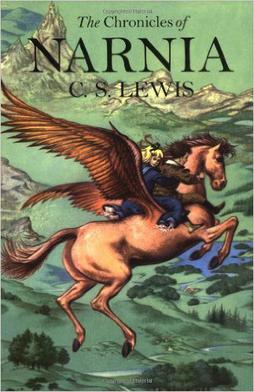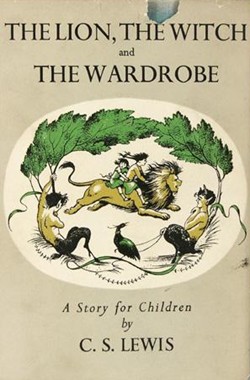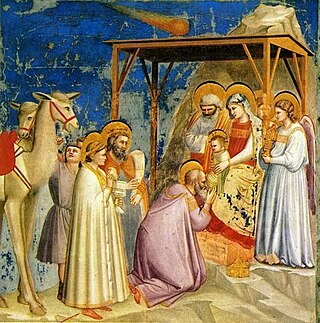
Astrology is a range of divinatory practices, recognized as pseudoscientific since the 18th century, that claim to discern information about human affairs and terrestrial events by studying the apparent positions of celestial objects. Different cultures have employed forms of astrology since at least the 2nd millennium BCE, these practices having originated in calendrical systems used to predict seasonal shifts and to interpret celestial cycles as signs of divine communications. Most, if not all, cultures have attached importance to what they observed in the sky, and some—such as the Hindus, Chinese, and the Maya—developed elaborate systems for predicting terrestrial events from celestial observations. Western astrology, one of the oldest astrological systems still in use, can trace its roots to 19th–17th century BCE Mesopotamia, from where it spread to Ancient Greece, Rome, the Islamic world, and eventually Central and Western Europe. Contemporary Western astrology is often associated with systems of horoscopes that purport to explain aspects of a person's personality and predict significant events in their lives based on the positions of celestial objects; the majority of professional astrologers rely on such systems.

The Chronicles of Narnia is a series of seven portal fantasy novels by British author C. S. Lewis. Illustrated by Pauline Baynes and originally published between 1950 and 1956, The Chronicles of Narnia has been adapted for radio, television, the stage, film and video games. The series is set in the fictional realm of Narnia, a fantasy world of magic, mythical beasts and talking animals. It narrates the adventures of various children who play central roles in the unfolding history of the Narnian world. Except in The Horse and His Boy, the protagonists are all children from the real world who are magically transported to Narnia, where they are sometimes called upon by the lion Aslan to protect Narnia from evil. The books span the entire history of Narnia, from its creation in The Magician's Nephew to its eventual destruction in The Last Battle.

A horoscope is an astrological chart or diagram representing the positions of the Sun, Moon, planets, astrological aspects and sensitive angles at the time of an event, such as the moment of a person's birth. The word horoscope is derived from the Greek words ōra and scopos meaning "time" and "observer". It is claimed by proponents of astrology that a horoscope can be used as a method of divination regarding events relating to the point in time it represents, and it forms the basis of the horoscopic traditions of astrology, although practices surrounding astrology have been recognized as pseudoscientific since the 18th century. Horoscope columns are often featured in print and online newspapers.

Western astrology is the system of astrology most popular in Western countries. Western astrology is historically based on Ptolemy's Tetrabiblos, which in turn was a continuation of Hellenistic and ultimately Babylonian traditions.

In astrology, an aspect is an angle that planets make to each other in the Horoscope; as well as to the Ascendant, Midheaven, Descendant, Lower Midheaven, and other points of astrological interest. As viewed from Earth, aspects are measured by the angular distance in degrees and minutes of ecliptic longitude between two points. According to astrological tradition, they indicate the timing of transitions and developmental changes in the lives of people and affairs relative to the Earth.
Hindu astrology, also called Indian astrology, Jyotisha or Jyotishya, and more recently Vedic astrology, is the traditional Hindu system of astrology. It is one of the six auxiliary disciplines in Hinduism that is connected with the study of the Vedas.

The Lion, the Witch and the Wardrobe is a portal fantasy novel for children by C. S. Lewis, published by Geoffrey Bles in 1950. It is the first published and best known of seven novels in The Chronicles of Narnia (1950–1956). Among all the author's books, it is also the most widely held in libraries. It was the first of The Chronicles of Narnia to be written and published, but is marked as volume two in recent editions that are sequenced according the stories' internal chronology. Like the other Chronicles, it was illustrated by Pauline Baynes, and her work has been retained in many later editions.

In astrology, sidereal and tropical are terms that refer to two different systems of ecliptic coordinates used to divide the ecliptic into twelve "signs". Each sign is divided into 30 degrees, making a total of 360 degrees. The terms sidereal and tropical may also refer to two different definitions of a year, applied in sidereal solar calendars or tropical solar calendars.

The Star of Bethlehem, or Christmas Star, appears in the nativity story of the Gospel of Matthew chapter 2 where "wise men from the East" (Magi) are inspired by the star to travel to Jerusalem. There, they meet King Herod of Judea, and ask him:
Where is He who has been born King of the Jews? For we have seen His star in the East and have come to worship Him.

Astrological belief in correspondences between celestial observations and terrestrial events have influenced various aspects of human history, including world-views, language and many elements of social culture.

Māshāʾallāh ibn Atharī, known as Mashallah, was an 8th century Persian Jewish astrologer, astronomer, and mathematician. Originally from Khorasan, he lived in Basra during the reigns of the Abbasid caliphs al-Manṣūr and al-Ma’mūn, and was among those who introduced astrology and astronomy to Baghdad. The bibliographer ibn al-Nadim described Mashallah "as virtuous and in his time a leader in the science of jurisprudence, i.e. the science of judgments of the stars". Mashallah served as a court astrologer for the Abbasid caliphate and wrote works on astrology in Arabic. Some Latin translations survive.

In astrology, exaltation is one of the five essential dignities of a planet. The exaltation is a place of awareness for the planet, whereas the fall is a position of weakness concerning the function of the planet. The sign position directly opposite a planet's sign of exaltation is considered to be its fall.

In astrology, a planet's domicile is the zodiacal sign over which it has rulership. This is a separate concept from the houses of the horoscope. A planetary ruler is given to each sign, over which the planet is said to have a more powerful influence when positioned therein. The ruling planet associated with a sign is also used as an implied focus of interpretation for the signs on house cusps in a chart. A planet is considered to be in domal dignity when it is positioned in the sign it rules. This is the strongest of the five essential dignities of a planet. Domicile is an archaic term in infrequent, specialist uses today; most astrologers use the simpler term "sign".
Julia Parker is an astrologer and author who, often in partnership with her husband Derek Parker, has written many popular and introductory books on astrology.

Astrological transits are one of the main means used in horoscopic astrology to forecast future trends and developments. As its name implies, astrological transits involve a method of interpreting the ongoing movement of the planets as they transit the horoscope. This is most often done for the birth or Natal Chart of a particular individual. Particular attention is paid to changes of sign, or house, and to the aspects or angles the transiting planets make with the natal chart.

Sun sign astrology, or star sign astrology, is a modern simplified system of Western astrology which considers only the position of the Sun at birth, which is said to be placed within one of the twelve zodiac signs, rather than the positions of the sun and the other six 'planets'. This sign is then called the sun sign or star sign of the person born in that twelfth-part of the year. Sun sign astrologers take this basic twelve-fold division and relate all the current movements of all the planets to each other, using traditional rules to divine meanings for each sign separately. Because the Moon has the fastest apparent movement of all the heavenly bodies, it is often used as the main indicator of daily trends for sun sign astrology forecasts.

Historically, astrological and astronomical symbols have overlapped. Frequently used symbols include signs of the zodiac and classical planets. These originate from medieval Byzantine codices. Their current form is a product of the European Renaissance. Other symbols for astrological aspects are used in various astrological traditions.
Kenny Kingston was an American psychic. He described himself as a psychic medium. He is sometimes referred to as a "psychic to the stars" due to his extensive contact with celebrities. Clients for his psychic readings included John Wayne, Harry S. Truman, Dwight D. Eisenhower, Rex Harrison, Lucille Ball, Marilyn Monroe, Whoopi Goldberg and Greta Garbo. Kingston operated a for-profit psychic reading website.

In astrology, planets have a meaning different from the astronomical understanding of what a planet is. Before the age of telescopes, the night sky was thought to consist of two similar components: fixed stars, which remained motionless in relation to each other, and moving objects/"wandering stars", which moved relative to the fixed stars over the course of the year(s).

Astrology consists of a number of belief systems that hold that there is a relationship between astronomical phenomena and events or descriptions of personality in the human world. Astrology has been rejected by the scientific community as having no explanatory power for describing the universe. Scientific testing has found no evidence to support the premises or purported effects outlined in astrological traditions.







